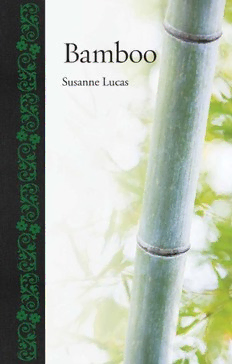
Bamboo PDF
Preview Bamboo
bamboo Reaktion’s Botanical series is the first of its kind, integrating horticultural and botanical writing with a broader account of the cultural and social impact of trees, plants and flowers. Already Published BambooSusanne Lucas GeraniumKasia Boddy LilyMarcia Reiss OakPeter Young PineLaura Mason |ewFred Hageneder Bamboo y Susanne Lucas reaktion books For my father, Frank Sheridan Lucas For the friends who inspired me to be adventurous, Marie Dolores Ianni Holland, Toni Grieb and Ned V. Jaquith Published by reaktion books ltd 33 Great Sutton Street London ec1v 0dx, uk www.reaktionbooks.co.uk First published 2013 Copyright © Susanne Lucas 2013 All rights reserved No part of this publication may be reproduced, stored in a retrieval system, or transmitted, in any form or by any means, electronic, mechanical, photocopying, recording or otherwise, without the prior permission of the publishers Printed and bound in China by C&C Offset Printing Co., Ltd A catalogue record for this book is available from the British Library isbn 978 1 78023 201 0 Contents y Introduction 7 one Distribution, Diversity and Classification 27 twoHorticulture 45 threeThe Hand of Man 63 fourModern Potentials, Today and Tomorrow 102 five The Environment 127 Timeline 153 Appendix i: Tribes and Subtribes of Bamboo 157 Appendix ii: Bamboo Gardens and Arboreta 160 References 162 Further Reading 171 Associations and Websites 173 Acknowledgements 175 Photo Acknowledgements 176 Index 178 Introduction y B amboo is thought to be the fastest growing woody plant on earth; some species can grow more than 1 metre a day. Hundreds of millions of people, animals and insects depend on it. With thousands of uses, as food, fabric, paper, shelter and inspir - ation, bamboo has traditionally contributed to the myriad physical requirements and spiritual needs of mankind. As the Chinese poet Su Dongpo wrote over 800 years ago, ‘A meal should have meat, but a house must have bamboo. Without meat we become thin; without bamboo, we lose serenity and culture itself.’ Throughout the ages, humans have utilized bamboo; it has been cut, split, bent, dried, chopped, cooked, tied, woven, carved and craft- ed to help us survive and thrive. This is still true today. It is estimat- ed that bamboo-related industries provide income, food and housing for over 2.5 billion people worldwide.1 As a sustainable resource, bamboo may also provide potential solutions to the damaging impact of human activities on the environment. Harvesting bamboo does not kill the plant. Despite its woody appearance, bamboo is not a tree – it is a grass. As a grass, bamboo puts out new growth in the form of stems known as ‘culms’. Once the culms are cut, they are referred to as ‘canes’. Bamboo culms grow to full size in a matter of a few weeks, tele- scoping upwards. For several years the stems do not get any larger opposite: The bold telescoping stems (referred to as ‘culms’) of Phyllostachys atrovaginata. 7 Photograph by Maurice Vidal Portman of a man drinking from a bamboo vessel (called Gob-da) in the Andaman Islands, 1890s. The ubiquitous bamboo basket.
